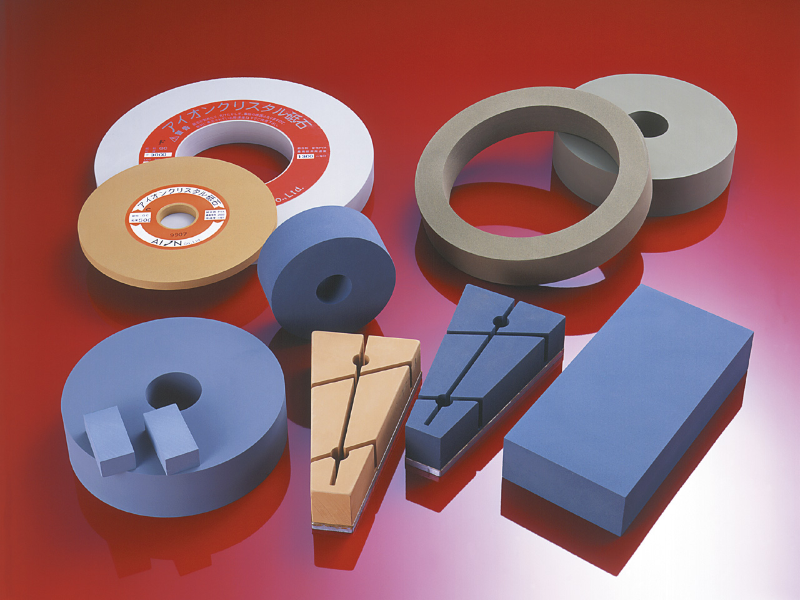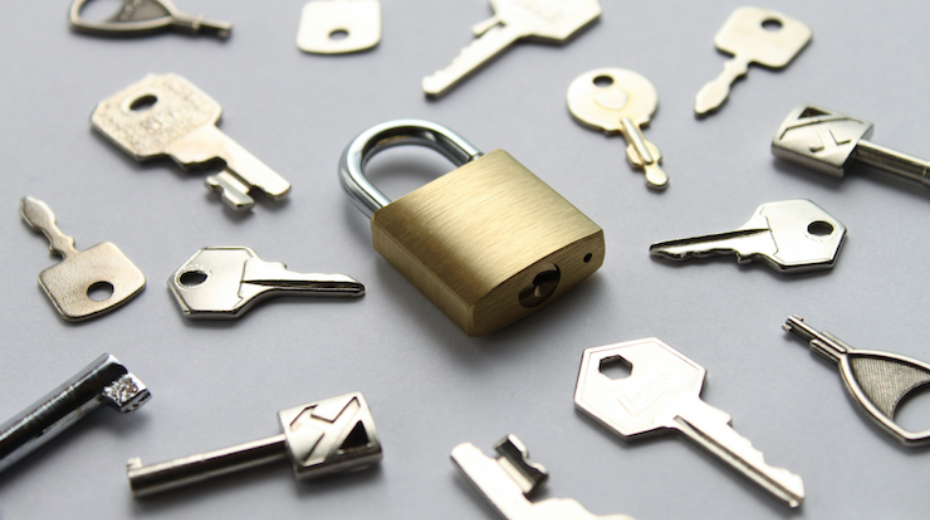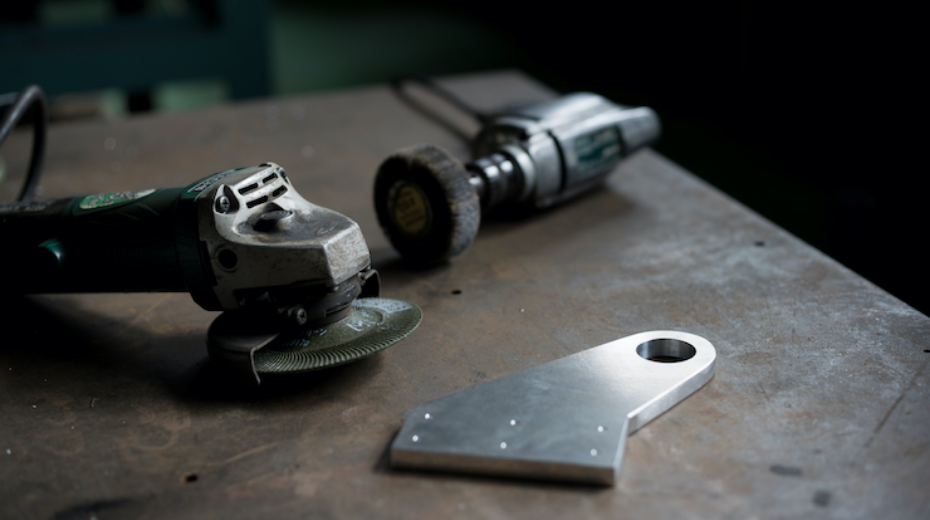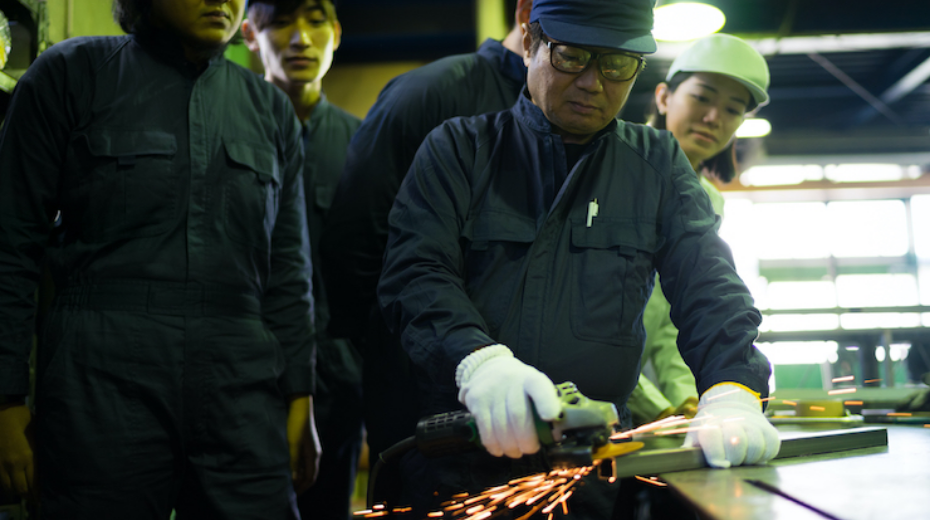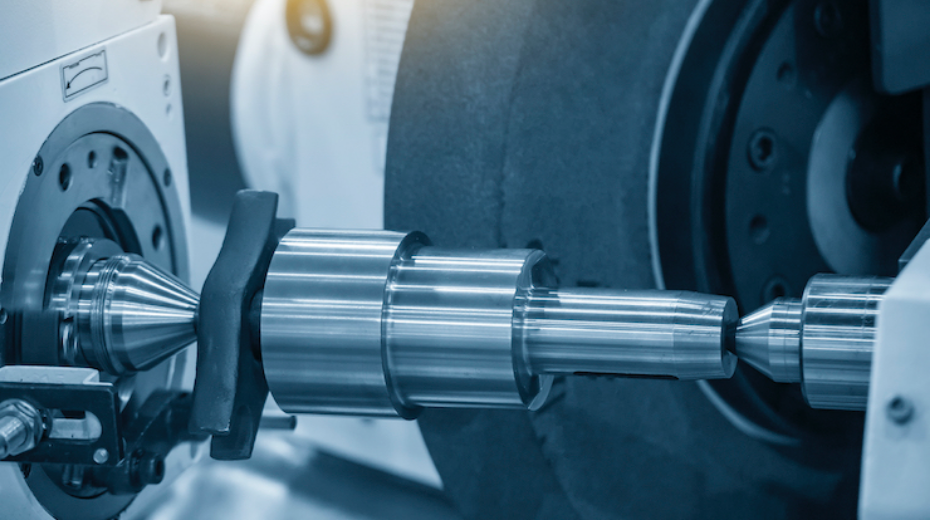
Grindstone loading typifies the troubles likely to occur during abrasive working. So, what sort of countermeasures are available for preventing grindstone loading? We will introduce grindstone problems and their causes, and strategies to counter loading—which among troubles with grindstones is especially likely to occur—and further, we will introduce ways to cope with situations where loading has in fact occurred.
How to Use Grindstones for Failsafe Polishing
Once abrasive working is undertaken, an issue that cannot be circumvented is problems with grindstones. What sorts of problems occur, and what sorts of repercussions appear on account of those problems?
The Problems That Occur with Polishing Grindstones
With grindstones employed in abrasive working, depending on the nature of the grindstone materials and the grindstone grain size, and on the processing conditions, significant differences appear in the finish. Choosing the optimal type of grindstone given these factors and proceeding with the abrasive working operations under the suitable parameters makes it possible to finish products into an intended condition.
For a detailed explanation of abrasive working features and types, please see “Abrasive Working: An Exploration of Types and Specific Examples of the Processes.”
If something wrong in the condition of the grindstone arises, however, finishing with the precision inherent to the grindstone becomes impossible. Problems like the following are what can occur with finishing grindstones.
- Loading
A grindstone is formed by a collection of tiny grains, with the grains individually each playing the role of a cutting tool. Loading is a state in which grinding debris clogs the interstices between the grains and adheres fast to the grindstone, such that the grains cannot act as cutting tools. - Grain Pullout
Grains whose polishing power has been lost should get pulled out of the grindstone at just the right timing, but pullout that is too rapid does not make for a good situation. A state in which the coming loose of the grains is rapid, with grains that still have polishing force falling out one after another, is referred to as grain pullout. Grain pullout can be deleterious to the trueness of the grindstone. - Attritious Wear
The coming loose of grains whose polishing power is gone and the appearance of new grains in the surface is what maintains the polishing power of the grindstone. A state in which grains whose cutting cusps have disappeared remain in place without falling out is referred to as attritious wear.
Impact of Grindstone Problems
When grindstone problems such as these occur, what sort of repercussions appear?
One example is that when loading occurs in a grindstone, grains that normally should be jutting out slightly from the grindstone surface become buried, which, spoiling their performance as cutting tools, degrades their polishing power. Consequently, polishing heat that should be released by the discharging of grinding debris becomes trapped in the contact surface between the grindstone and the workpiece, giving rise to burn on, and deformation of, the workpiece.
The trapping of heat and burying of abrasive grains brought about by loading leads to magnification of the polishing resistance. The resistance enlarges the frictional force on the polished surface, which can give rise to chattering, in which either the machined workpiece or the grindstone micro-vibrates. When chattering occurs, riblike or undulating patterns arise on the finished surface, making a uniform finish impossible.
What’s more, the heat decreases the binding force of the bond in the grindstone, further magnifying the polishing resistance, as a consequence of which the grindstone ends up partially fragmenting. This sort of symptom is referred to as grindstone chipping, in which case not only the decreased life of, but also the damage to, the grindstone can render it unusable.
Grain pullout and attritious wear likewise decrease polishing power, bring about burning and chattering, and prove to be a factor leading to deterioration of tool life and degradation in machining accuracy and quality.
Abrasive machining necessarily entails finishing the workpiece surface to a designated surface roughness. Yet because the occurrence of the grindstone problems we’ve discussed can sacrifice assurance of the targeted quality, to the extent possible the causative factors must be eliminated.
To Prevent Grindstone Loading
Among these grindstone problems, especially likely to arise and have a significant impact on the finishing of a product is loading.
To prevent loading in a grindstone, what sort of care should be taken?
Choosing a Suitable Grindstone
To prevent loading, selecting a grindstone suited to the type of machining is a matter of course, but choosing a grindstone suited to the material of the workpiece is also crucial.
In general, loading tends not to occur readily in grindstones of high porosity. And yet because loading is prone to occur in situations where the grindstone grit is too coarse or the bond is too hard, care is required.
For a detailed examination of grindstone setups and types, and of how to choose grindstones, please see “How to Select a Grindstone Suited to Finishing: Explanation of Grindstone Types and Finishing Setups.”
Aion’s PVA Grindstones, possessing a high-porosity structural makeup, generate little polishing heat, and thus are distinguished in not being prone to loading.
Adjusting Machining Parameters
In grinding operations overall, configuring machining parameters such as at what sort of angle will the tool be set against the workpiece and at what speed will it be moved is crucial. In finishing operations too, since the way the operations proceed will vary depending on the settings for the course-of-operation parameters, incidence of grindstone loading can be held in check.
In abrasive working, approaching a targeted surface roughness, shortening machining time, and keeping grindstone wear to a minimum are objectives of machining-parameter configuration. A balancing of these objectives—quality, efficiency, and cost—should be included in considerations for configuring suitable machining parameters.
For an exploration of surface roughness in finishing, please see “The Thinking Behind Surface Roughness and Selecting a Logical Polishing Technique.”
Coolant Remediation
Coolant helps cool down the finishing surface, and at the same time also plays a role in rinsing away grinding debris. Running short of a given coolant on the finishing surface will therefore make loading likely to occur.
For these sorts of reasons, raising the supply pressure to increase the supply volume of coolant delivered during a finishing operation also ties in with loading prevention.
When coolant grows old and deteriorates, its inherent cleaning capacity diminishes, making loading likely to occur. This sort of situation can be remedied by replacing the old coolant with a fresh supply to make grinding debris rinse away better.
Dressing To Clear Out Grindstone Loading
Despite the adoption of preventative measures such as those just discussed, in some cases grindstones will still become clogged. Especially if the finishing object is a soft metal, loading will be virtually unavoidable.
When grindstone loading has in fact occurred, what is carried out to revive the grindstone’s innate polishing power is the maintenance method known as “dressing.”
Dressing Objectives
Dressing is performed to put micro-jaggedness on the grindstone by clearing out loading, to restore the grains’ edge. The goal of dressing is thereby to readjust the grindstone to allow it to polish to the desired surface roughness.
Given that the goal of dressing is to modulate the jaggedness of the grains to restore the polishing power that the grindstone innately possesses, the method is also referred to as “conditioning.”
Dressing Methods
To dress a grindstone, the following methods are available.
- Dressing carried out employing grit
Methods include blasting the working surface with grit, and flushing the working surface with a grit slurry. Loading matter that is in the surface of the grindstone is scraped away by the grit. - Dressing carried out employing a grindstone
Methods include pressing a rectangular-block grindstone against the grindstone being dressed, and setting a round grindstone with an attached brake on the grindstone being dressed. The finishing-directed surface of the grindstone is scraped off by the separate grindstone. - Dressing carried out employing a diamond dresser
Method using a dressing tool, known as a “dresser,” on the tip of which diamonds are attached. The dresser is pressed against the grindstone to tune the jaggedness of the grains while scraping away the grindstone surface. - Dressing carried out employing soft steel
Among grindstones are types that wear down rapidly when polishing soft steels. In an effective method on grindstone types like these, none other than soft steel itself is pressed against the grindstone, causing surface grains to come loose and meanwhile enabling loading to be cleared away. - Dressing by Means of Electrical Discharge Machining/Electrochemical Machining
Method in which the metal-bonding agent is dissolved by pulsed electrical discharge or contact electrical discharge and the grindstone surface is scraped down. Also available is a method that, exploiting reactions from metal plating, dissolves the metal-bonding agent by electrochemical machining.
Coping with Grindstone Loading for Precision Finishing Operations
We have introduced problems that grindstones are subject to in finishing operations, and strategies for dealing with those problems.
Among troubles with grindstones, especially likely to occur is loading, which has a serious impact on the finishing of products. Effective for preventing loading is the selection of a grindstone suited to the job, and the rationalization of the machining parameters. In situations where, despite these measures, loading has nonetheless occurred, dressing the grindstone will make finishing operations with the grindstone’s inherent precision possible.



 Search by application or purpose
Search by application or purpose
